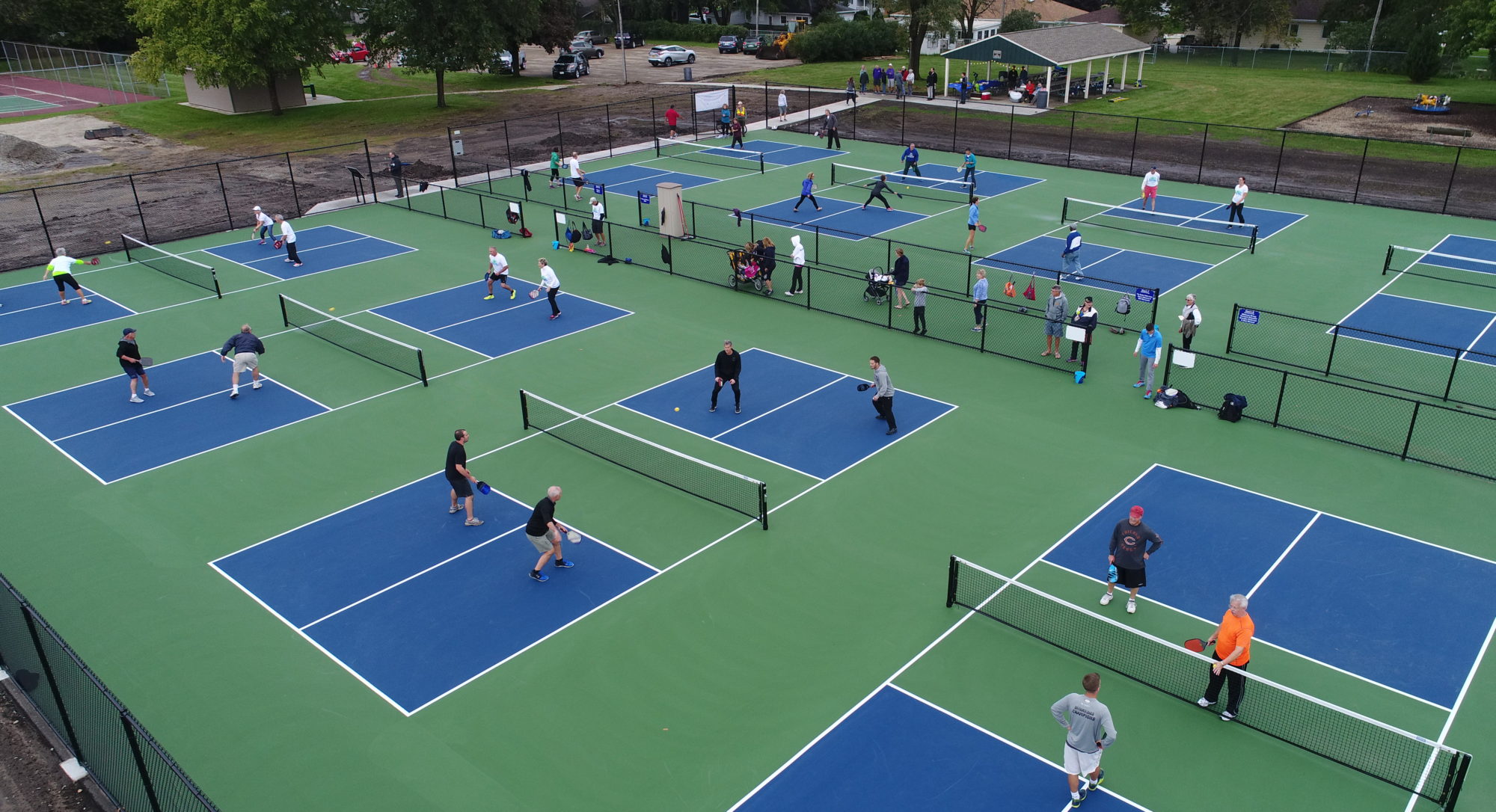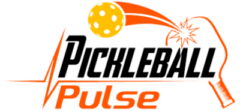
The basic rules of Pickleball are simple, yet it’s essential you learn them well!
The game can be played as a singles match, or as a doubles match. It is usually played, and can be more fun, as a doubles game. Unlike in other racquet sports where the court is different for singles or doubles, in pickleball the same court is used for each.
You will be aware of the court that pickleball is played on so let’s have a more detailed look at some of the more intricate areas of the rules.
The Basics
The Serve
Before the match begins, players must determine who will have the first serve, and from which side of the court. This can be done in any agreed fashion, such as drawing straws, tossing a coin or any other method. Once agreed, the following rules apply to the service:
- A pickleball serve is always played underhand, with the ball contact below the server’s waist.
- The server’s feet must remain behind the baseline when serving, with entry onto the court permitted only after the serve.
- Service is diagonal, and must land within the allotted area on the court.
- A single attempt at serve is permitted, with a let being a ball that touches the net and lands in the allotted service area; let’s are replayed.
So, that’s the basics of the pickleball serve. Now some more specifics.
- First serve is always from the right hand portion of the court
- When a point is scored, the players switch from left to right, and this continues throughout.
- When a fault is committed, the serve passes to the other player on the team
- The second server now keeps the serve until the next fault is committed, at which point the serve passes to the opposing team.
To summarise at this point, unlike tennis – in which the serve passes from team to team, with player 1 from each team serving for a game then team player from each following on, in pickleball both players from one team serve before the opposing team get a chance. Let’s carry on.
The exception to this rule comes in the first game, in which one player on team one serves until the fault, at which point the opposing team is handed the serve. In singles, the positioning is the same, and the serve changes hands when faults are played.
Scoring
In pickleball, as in some other racquet games, only the serving team can score points. Here are a few of the guidelines to the scoring process:
- A game is played as first to 11 points, with a 2-point clear advantage. In certain tournaments, this can be extended to 15 or 20 points, still with the 2-point clear advantage.
- Note that, when the score is even, the first server in the team will be in the right-hand sector of the court. When the score is off, they will be in the other sector.
Now for the Rules of Play
So, we know how to serve and how the game is scored, but what about when the ball is in-play? There are some interesting rules to pickleball that make it stand out from other racquet sports, the ‘two bounce’ rule being one.
The Two-Bounce Rule
This is a clever rule designed to do away with the advantage of aggressive serves – and equally aggressive returns – and to extend the game. It goes like this: when a ball is served, before it can be returned it must be allowed to bounce once. When returned for the first time, it must also be allowed to bounce once on the server’s side of the court – thus, ‘two bounce’ rule.
Once this has happened, players are free to volley the ball should they wish – that is hit it before it bounces, or to play ground-strokes after the bounce.
So, to summarise, the ball is only in play once it has bounced, been returned, and then bounced again.
We said that after the two bounces had been observed, players can volley the ball. This is not always the case!
The Non-Volley Zone
Any part of the court within 7-feet of the net, on both sides, is consider the non-volley zone. Within this area, players are not permitted to volley the ball. The reason for this is to make the game more technical and entertaining, by eliminating the impossible to return smashes often seen in tennis from close to the net.
If a player volleys a ball and accidentally sets foot in the non-volley zone – even after having played the shot – it is considered a fault. A player is allowed in the zone at any other time than when playing a volley shot.
For the record, you may often hear the non-volley zone referred to as ‘the kitchen’!
Line Calls
Faults can also come about via line calls. When serving, for example, the ball must be within the allotted lines on the court – that is in the correct half of the court diagonally, and beyond the non-volley zone line. If the ball touches any line other than the non-volley line it can be called ‘in’; if it is beyond the line – or touches the non-volley line – it is a fault.
Faults
So, we have the basics of what is actually a simple, energetic and quite exciting game to play, and once you learn the rules and the techniques involved, you will be keen to play more. To summarise, here is some more about faults;
- A fault is any violation of the rules we have listed above.
- If the receiving team commits a fault – for example, entering the non-volley zone illegally or any line fault – a point is awarded to the serving team.
- If the server commits a fault, play passes either to the second player on the team or, accordingly, to the other team.
That is pickleball in a nutshell, so why not get some friends together, find a court, and have a fun game!

According to USA pickleball rules service lets are played not replayed as long as they land in the proper court.